In today’s data-deluged world, businesses are no longer starving for information; they are drowning in it. The true challenge for any US enterprise is not data collection but the extraction of actionable intelligence that drives competitive advantage. For data analytics firms, this presents a monumental opportunity.
By harnessing the power of Artificial Intelligence (AI), you can transform your services from mere data reporting into a strategic partnership that fuels explosive growth for your clients and, in turn, for your own business.

This article delves into the tangible ways AI can supercharge your data analytics business, moving beyond the hype to provide a detailed, SEO-friendly guide complete with practical applications, essential tools, and a clear implementation roadmap.
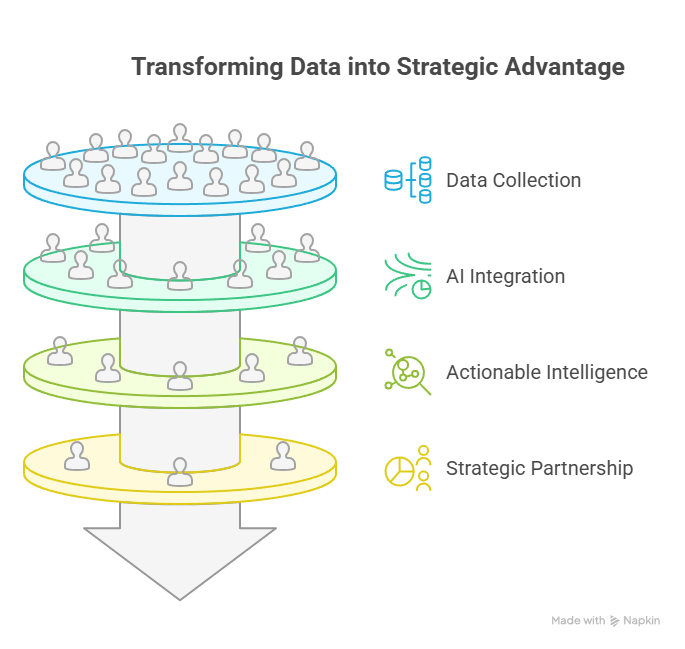
The Bottleneck of Traditional Analytics: Why a Change is Necessary
For years, traditional data analytics has been a cornerstone of business intelligence. However, it’s increasingly clear that manual processes and conventional methods are hitting a ceiling. These legacy approaches are often plagued by:
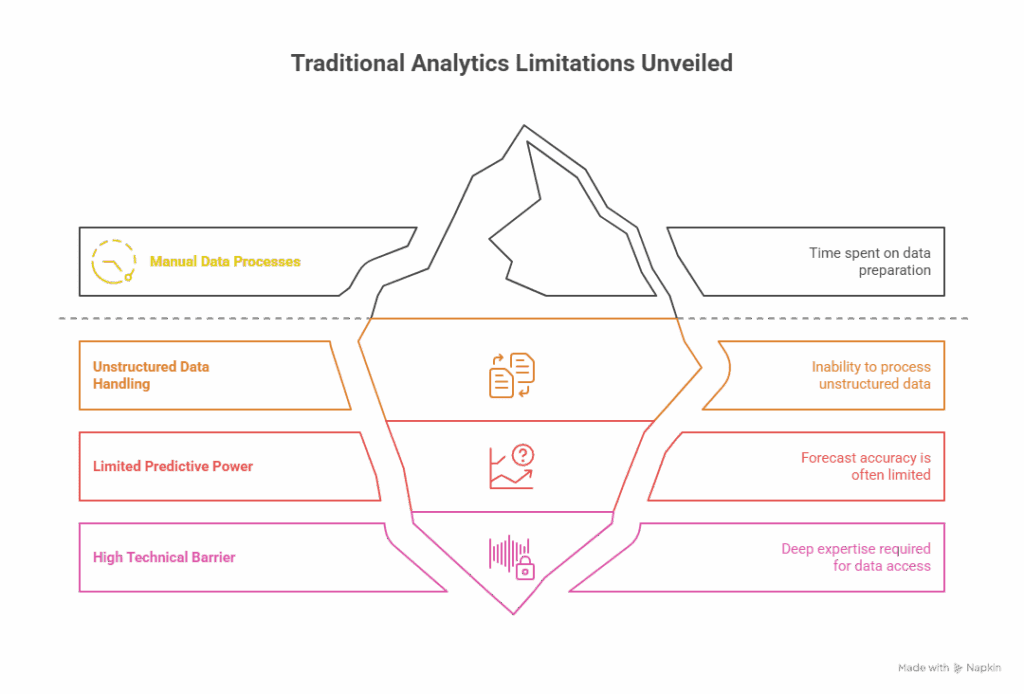
- Time-Consuming Manual Processes: Analysts spend an inordinate amount of time on data collection, cleaning, and preparation before any real analysis can even begin. This tedious work is not only inefficient but also prone to human error.
- Inability to Handle Unstructured Data: A staggering 80-90% of enterprise data is unstructured, including formats like emails, meeting notes, social media conversations, videos, and audio files. Traditional tools are ill-equipped to handle this wealth of information.
- Limited Predictive Power: While traditional analytics can tell you what happened, its capacity to accurately forecast future trends and behaviors is limited, often relying on historical data without grasping complex, non-linear patterns.
- High Barrier to Entry: Deriving insights often requires deep technical expertise, creating a bottleneck where only a select few can access and interpret the data.
AI as a Supercharger: How Artificial Intelligence Transforms Data Analytics
AI doesn’t just incrementally improve data analytics; it revolutionizes it. By integrating technologies like machine learning (ML), natural language processing (NLP), and predictive algorithms, AI enhances every stage of the analytics workflow. This integration allows your business to offer services that are faster, more accurate, and infinitely more insightful.
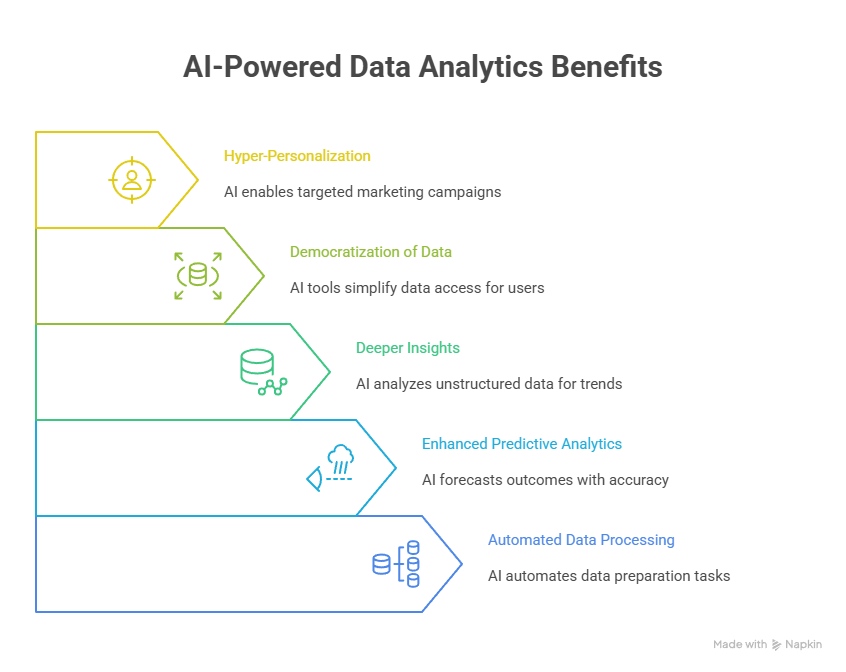
Key Benefits of Integrating AI into Your Data Analytics Offerings:
- Automated Data Processing and Cleaning: AI algorithms can automate the laborious tasks of data preparation, handling vast datasets from disparate sources and formats in a fraction of the time it would take a human analyst. This frees up your team to focus on higher-value strategic work.
- Enhanced Predictive Analytics: AI excels at identifying subtle patterns and correlations in massive datasets to forecast future outcomes with remarkable accuracy. This empowers your clients to anticipate market shifts, predict customer behavior, and proactively manage risks.
- Deeper Insights from Unstructured Data: AI, particularly NLP, can analyze text from reviews, social media, and customer service chats to gauge sentiment and identify emerging trends. This unlocks a new dimension of understanding that was previously inaccessible.
- Democratization of Data: AI-powered tools are becoming increasingly user-friendly, with features like natural language queries that allow non-technical users to ask complex questions of their data and receive easy-to-understand visualizations and summaries.
- Hyper-Personalization at Scale: By analyzing individual customer data, AI can segment audiences with incredible precision, enabling highly targeted and effective marketing campaigns that were once impossible to execute.
Real-World Applications: Turning AI Theory into Business Reality
The impact of AI in data analytics is not theoretical; it’s delivering tangible results across industries. By understanding these applications, you can tailor your services to meet the specific needs of your US business clients.
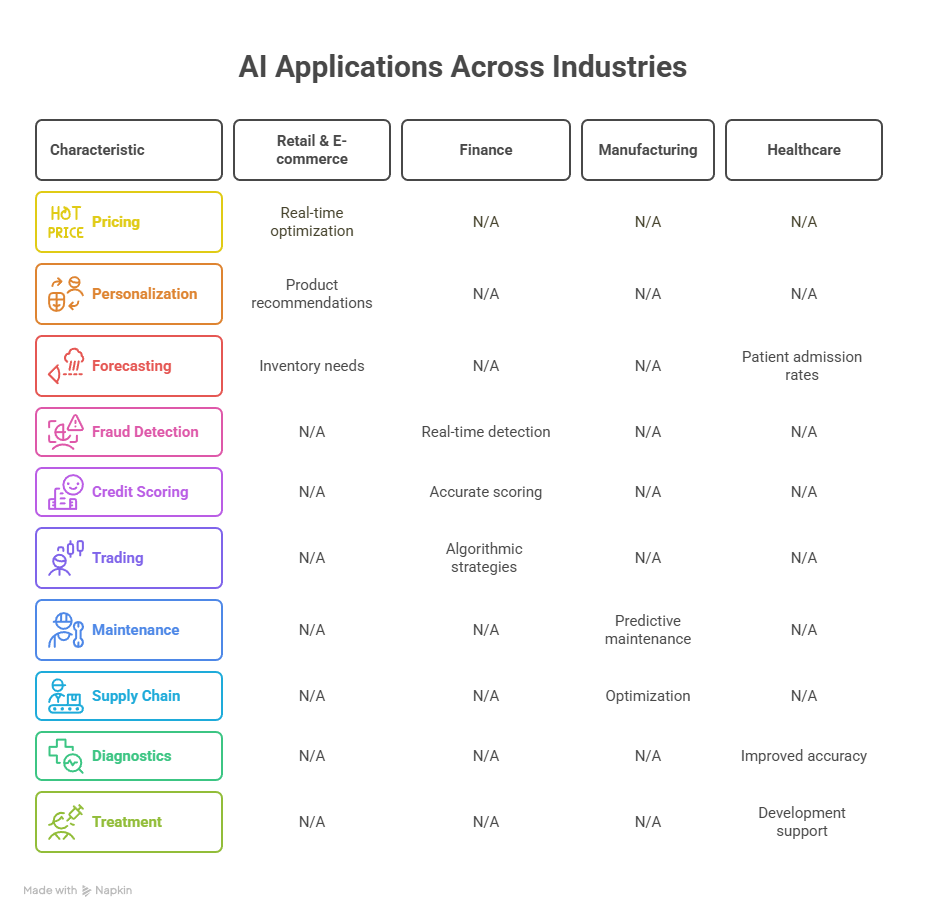
- Retail and E-commerce: AI can optimize pricing in real-time based on demand and competitor analysis, personalize product recommendations to boost conversion rates, and forecast inventory needs to prevent stockouts and overstock situations.
- Finance: In the financial sector, AI algorithms are instrumental in detecting fraudulent transactions in real-time, performing more accurate credit scoring, and powering algorithmic trading strategies.
- Manufacturing: Predictive maintenance, powered by AI, can anticipate equipment failures before they happen, minimizing downtime and saving significant costs. AI also helps in optimizing complex supply chains.
- Healthcare: AI can analyze medical data to predict patient admission rates, improve diagnostic accuracy, and even contribute to the development of new treatments by identifying patterns in clinical trial data.
The Modern Data Analyst’s Toolkit: Essential AI-Powered Platforms
To deliver these advanced services, your data analytics business needs to be proficient with the right tools. Many popular platforms now integrate AI and machine learning capabilities, making them more powerful than ever.
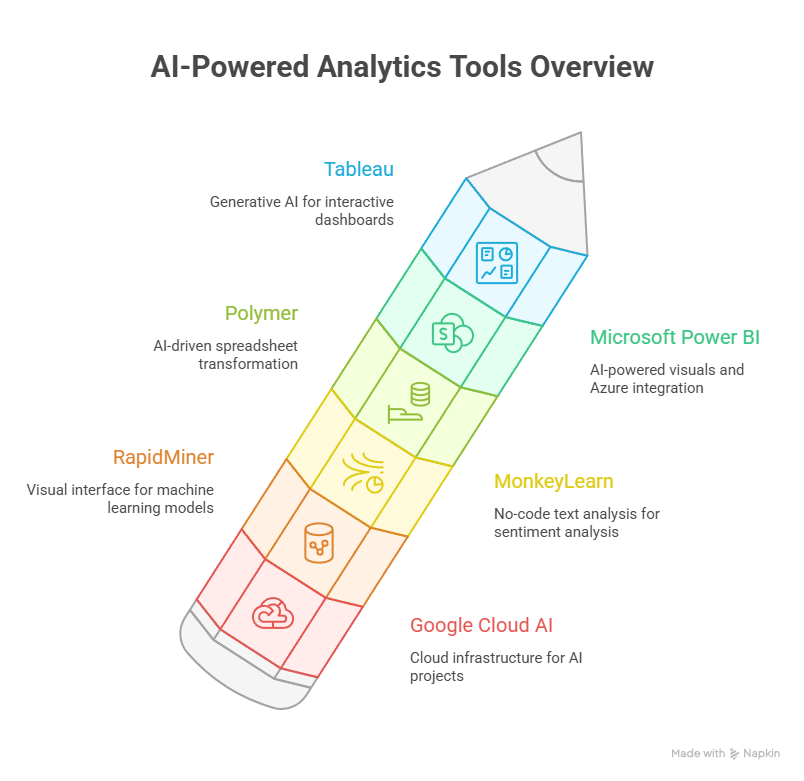
| Tool | Key AI-Powered Features | Ideal Use Case for Data Analytics Businesses |
| Tableau | Generative AI for automated insights, natural language queries, and predictive modeling. | Creating intuitive, interactive dashboards for clients that automatically highlight key trends and allow for easy exploration. |
| Microsoft Power BI | AI-powered visuals, automated machine learning (AutoML), and integration with Azure Cognitive Services. | Businesses already embedded in the Microsoft ecosystem, offering seamless integration for comprehensive business intelligence. |
| Polymer | Automatically transforms spreadsheets into interactive, searchable dashboards using AI. | Rapidly creating and deploying BI solutions for clients who need quick insights from their existing spreadsheet data. |
| MonkeyLearn | No-code text analysis using machine learning to perform sentiment analysis, keyword extraction, and topic classification. | Analyzing qualitative data from surveys, reviews, and social media to provide clients with a deeper understanding of customer sentiment. |
| RapidMiner | A data science platform with a visual, drag-and-drop interface for building and deploying machine learning models. | Developing custom predictive models for clients, such as churn prediction or demand forecasting, without extensive coding. |
| Google Cloud AI | Offers a suite of tools including BigQuery ML and AutoML for training custom models with minimal expertise. | Scaling analytics and machine learning projects on a powerful cloud infrastructure, suitable for large and complex datasets. |
A 6-Step Roadmap to Integrate AI into Your Data Analytics Business
Transitioning to an AI-powered analytics firm requires a strategic and phased approach. Rushing into implementation without a clear plan can lead to wasted resources.
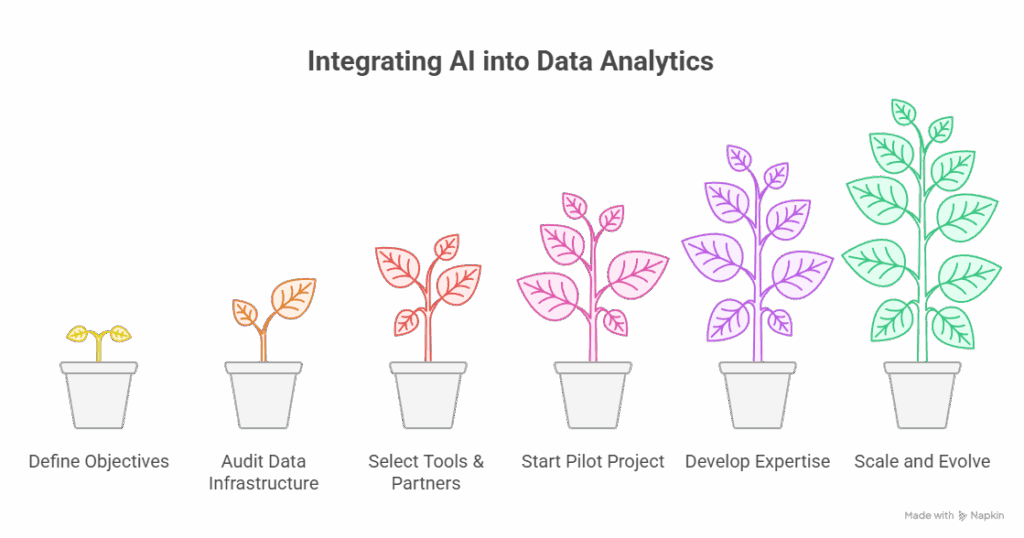
- Define Clear Business Objectives: Start by identifying the specific problems you want to solve for your clients with AI. Is it about improving their marketing ROI, optimizing their supply chain, or reducing customer churn? Aligning AI initiatives with tangible business value is crucial.
- Audit Your Data Infrastructure: AI models are only as good as the data they are trained on. Ensure you have processes to access, clean, and govern client data effectively. This includes establishing robust data pipelines and considering centralized storage like data lakes or warehouses.
- Select the Right Tools and Partners: Based on your objectives and in-house expertise, choose the AI platforms and tools that best fit your needs. Consider factors like ease of use, integration capabilities, scalability, and cost.
- Start with a Pilot Project: Don’t try to overhaul everything at once. Begin with a small, manageable pilot project with clear key performance indicators (KPIs). This will allow you to validate your approach, demonstrate value, and learn from the experience.
- Develop In-House Expertise: Invest in training your team. Analysts need to understand not just how to use AI tools, but how to interpret their outputs, identify potential biases, and collaborate with AI as a strategic partner.
- Scale and Evolve: Once your pilot is successful, you can begin to scale your AI offerings across more clients and services. Remember that AI is not a “set it and forget it” solution; models need to be regularly retrained and workflows evolved to maintain accuracy and relevance.
The Future is Now: Leading the Data-Driven Revolution
The integration of AI into data analytics is not a distant future trend; it is the current reality defining the competitive landscape. By embracing AI, data analytics businesses in the USA can move beyond providing historical reports and become indispensable partners in their clients’ success. You can offer them the foresight to navigate uncertainty, the efficiency to optimize operations, and the insight to unlock new avenues for growth. The firms that successfully make this transition will not just survive; they will lead the next wave of data-driven innovation.










